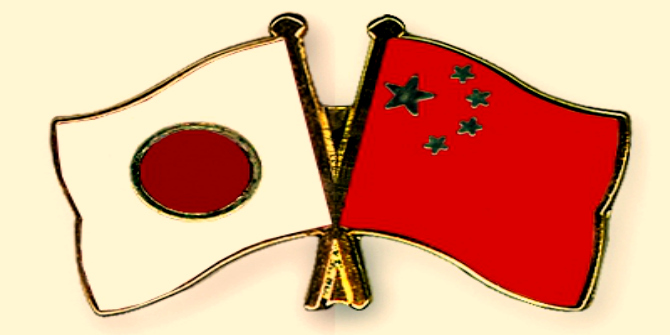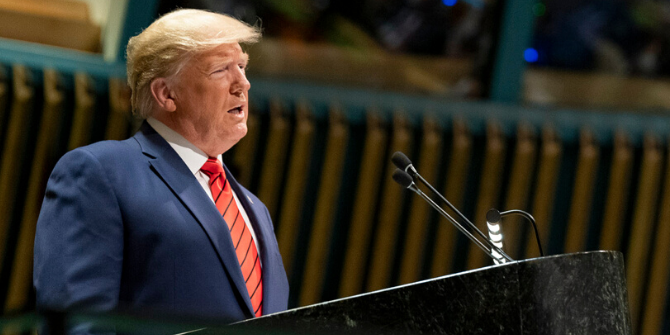 Image Credit: Neela, Ste and children Lamb
Image Credit: Neela, Ste and children Lamb
On Monday 25 January 2016, Anne-Marie Slaughter discussed her much-publicised new book, Unfinished Business: Women Men Work Family. This book seeks to challenge the assumption that professional life and care-giving are antithetical, arguing that this has served to maintain longstanding gender imbalances in the realm of work. LSE Review of Books recommends 10 other must-read books on gender and the workplace.
What mechanisms serve to maintain the gender pay gap and other forms of discrimination in the labour market? This book provides a comprehensive, empirically-driven interrogation of various facets of discrimination through data obtained from the USA, Spain and Italy. Ria Ivandic welcomes it for opening up a highly important academic dialogue on previously unexamined aspects of labour market discrimination.
 Recoding Gender: Women’s Changing Participation in Computing. Janet Abbate. MIT Press. 2012.
Recoding Gender: Women’s Changing Participation in Computing. Janet Abbate. MIT Press. 2012.
This book explores the untold history of women in computer science and programming from World War Two to the late twentieth century. Demonstrating how gender has shaped the culture of computing, it offers a valuable historical perspective on women’s under-representation in the field. Jennifer Miller recommends this to readers interested in an account of women’s participation in, and contributions to, computer science, and to those seeking answers to the challenges in setting policy for the scientific and technical workforce.
In 2013, out of 7,776 female state legislators serving across the USA, 364 were women of colour; of these, 239 were African American women. Linking personal narratives to political behaviour, this book elicits the life histories of African American women legislators to understand how their experiences of racism and sexism have influenced their legislative decision-making and policy preferences, writes Muireann O’Dwyer.
 Father and Daughter: Patriarchy, Gender and Social Science. Ann Oakley. Policy Press. 2014.
Father and Daughter: Patriarchy, Gender and Social Science. Ann Oakley. Policy Press. 2014.
For many aspiring young female sociologists, Ann Oakley’s writing has been inspirational and reassuring. This book explores her own life and that of her father, Richard Titmuss, a well-known policy analyst and defender of the welfare state, to offer an absorbing view of the connections between private lives and public work. Essential reading, finds Sally Brown.
As debates about gender quotas become increasingly prominent, it is imperative that we understand how, if at all, they achieve the ends to which they are directed. This book stands as an important contribution to this discussion. Linnea Sandström Lange finds it to be full of empirical insights into the efficacy of gender quotas, arguing that the rather pessimistic immediate picture painted by the studies detailed in the book should be counter-balanced by acknowledging the unknown long-term effects of gender quotas.
This book examines how US military women have impacted upon, and been affected by, the wars in Iraq and Afghanistan, using the analytical lens of feminist IR theory. It assesses how the global world of international politics and warfare has been localised in the life-and-death narratives of female service personnel by their experiences of combat, homelessness and PTSD. Mercy Ette feels that the book would have benefited from some tighter editing, but overall it offers fresh insight into the impact of war on women and amplifies personal stories to illustrate the gendered nature of war.
Based on analyses from 21 research teams in 14 countries, this book explores what it takes to wield the emancipatory potential of Information Communications Technology (ICT). The case studies never fail to arouse curiosity, though some chapters are a little short, writes Morgane Colleau.
 Women and Journalism. Suzanne Franks. I.B. Tauris. 2013.
Women and Journalism. Suzanne Franks. I.B. Tauris. 2013.
In many countries, the majority of high-profile journalists and editors remain male. Although there have been considerable changes in the prospects for women working in the media in the past few decades, women are still noticeably in the minority in the top journalistic roles, despite making up the majority of journalism students. This book provides an overview of the ongoing imbalances faced by women in the media and looks at the key issues hindering gender equality in journalism, writes Lauren Maffeo.
In 1960, Sirimavo Bandaranaike of Sri Lanka made history when she was appointed the world’s first woman prime minister. In the half-century following her achievement, fewer than 80 women worldwide have attained the office of prime minister or president. This book aims to explain the mechanisms that push politically active women into relatively weak posts, and why women who successfully attain executive office almost always hail from political families within unstable systems. Senia Cuevas is impressed by this thorough text.
In an era when technology is still associated with masculinity, this book is an important and timely investigation of the gendered history of engineering education in the United States. It examines the rhetorical traps, social and political obstacles and widespread hypocrisy surrounding the debates over coeducation in the course of the last century. Although Leonie Maria Tanczer feels conflicted about the title, she encourages engineering students and educators, scholars of women’s history and students of science and technology studies to read this chronological analysis of women’s struggle to enter a male-dominated territory.


 Unexplored Dimensions of Discrimination. Tito Boeri, Eleonora Patacchini and Giovanni Peri (eds). Oxford University Press. 2015.
Unexplored Dimensions of Discrimination. Tito Boeri, Eleonora Patacchini and Giovanni Peri (eds). Oxford University Press. 2015. Sisters in the Statehouse: Black Women and Legislative Decision Making. Nadia E. Brown. Oxford University Press. 2014.
Sisters in the Statehouse: Black Women and Legislative Decision Making. Nadia E. Brown. Oxford University Press. 2014. The Impact of Gender Quotas. Franceschet Susan, Mona Lena Krook and Jennifer M. Piscopo (eds). Oxford University Press. 2012.
The Impact of Gender Quotas. Franceschet Susan, Mona Lena Krook and Jennifer M. Piscopo (eds). Oxford University Press. 2012.

 Shattered, Cracked or Firmly Intact? Women and the Executive Glass Ceiling Worldwide. Farida Jalalzai. Oxford University Press. 2013.
Shattered, Cracked or Firmly Intact? Women and the Executive Glass Ceiling Worldwide. Farida Jalalzai. Oxford University Press. 2013. Girls Coming to Tech! A History of American Engineering Education for Women. Amy Sue Bix. MIT Press. March 2014.
Girls Coming to Tech! A History of American Engineering Education for Women. Amy Sue Bix. MIT Press. March 2014.




